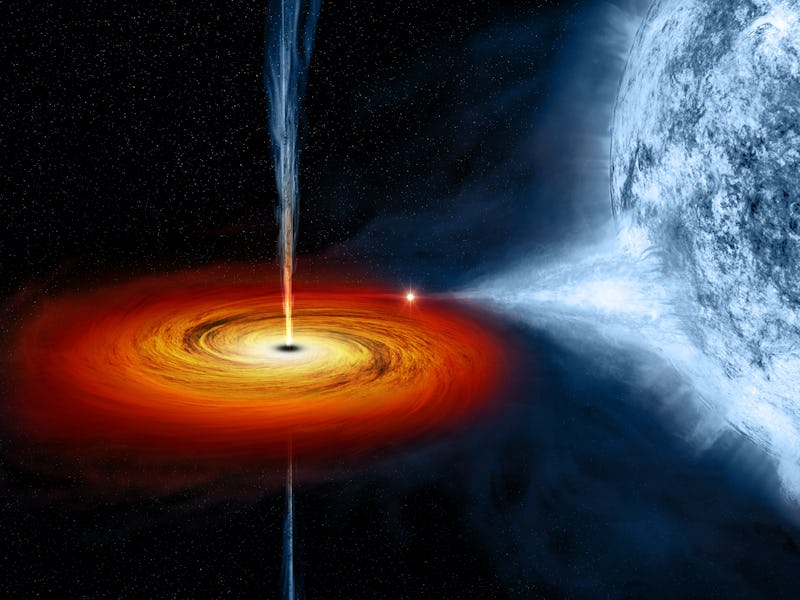Scientists discover weird objects orbiting Milky Way's central black hole
They look like gas, but behave like stars.

For nearly 15 years, a cosmic mystery has been unfolding at the center of our galaxy, and the main character is the Milky Way’s central supermassive black hole — Sagittarius A*.
It all began in 2005, when astronomers observed a strange object orbiting around the black hole at the center of our galaxy. The object, dubbed G1, appeared to be a cloud of gas. And then, in 2012, astronomers watched as a second cloud of gas, (surprisingly) named G2, also made its way closer to Sagittarius A*.
The two objects were weird. As they got closer to the black hole, they stretched and distorted so much that scientists weren’t sure what to make of them.
Now, the space plot thickens.
Scientists have discovered a new class of these strange and mysterious objects orbiting around the black hole. In a published Wednesday in the journal Nature, scientists detail four new objects — G3, G4, G5 and G6 — and determine their orbit around Sagittarius A*.
The discovery, more then 13 years in the making, provides more clues to the behavior of the monstrous bodies that lie at the center of galaxies.
An illustration of the orbits of the six objects found in the center of the Milky Way.
Anna Ciurlo, postdoctoral researcher at University of California, Los Angeles and first author of the new study, found the objects by chance as she was looking at data from the center of the Milky Way.
“It was a big mystery what these things were,” Ciurlo tells Inverse. “People tried to understand where they came from but nobody was looking for other objects.”
Weird objects with even odder behavior
The newly discovered objects orbit around the black hole in a period that ranges between 100 to 1,000 years. For most of their turn around Sagittarius A*, they are compact — unlike a gas cloud — but stretch out and elongate when they are closest to the black hole.
“They look like little compact circular objects,” Ciurlo says. “It’s very different from what you see from an extended gas cloud.”
The new observations are the first to show the objects actually moving. It’s hard for astronomers to see an object in motion in space as things tend to move very slowly. But in the centers of galaxies, astronomers can observe cosmic bodies moving because the black hole makes galaxy centers very active, Ciurlo says.
Artist’s impression of G objects, with the reddish centers, orbiting the supermassive black hole at the center of our galaxy. The black hole is represented as a dark sphere inside a white ring (above the middle of the rendering).
What, exactly, these weird objects are remains a mystery. But the leading theory is that all six were binary stars, which means two stars interlocked in an orbit around each other, that merged as a result of the gravitational pull of the supermassive black hole.
If true, that means black holes may be driving stars to merge more frequently at the centers of galaxies across the universe.
“If this mechanism is at play in the Milky Way, it might occur somewhere else in another galaxy,” Ciurlo says.
The Milky Way: A perfect lab
As astronomers’ methods and instruments improve, so too will their observations of this enigmatic region, some 26,000 light years away from Earth.
“It’s a region we’re a little bit obsessed with and we observe it constantly,” she says. “One of the reasons why we study the center of our own galaxy so intently is because it’s the closest one to us and we can see in more detail.”
“This environment with the black hole in the middle of the galaxy is really messy,” Joe Pesce program director at the National Science Foundation’s Division of Astronomical Sciences, who was not involved in the study, tells Inverse. “As we look with new and better instruments, we see better details and open up new mysteries of the universe.”
The researchers hope to spot more of these objects. If they do, it will help them figure out whether these odd items are an anomaly, or if they are a signature of a pattern of behavior for supermassive black holes.
“The supermassive black hole in the middle of our galaxy is the closest supermassive black hole to us,” Pesce says. “It’s a relatively nearby laboratory for these types of studies.”